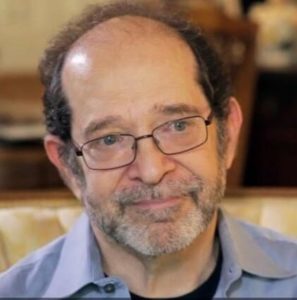Book Review: The Hidden Tools of Comedy by Steve Kaplan
Steve Kaplan ‘s book The Hidden Tools of Comedy
is a great book for people who are constructing comic scripts. While the book focuses intensively on movies and television, the advice given here is equally applicable to work in the theatre, or even in novels.
Fair warning: There are no magic bullets here. Kaplan is not a believer in comic myths such as “K is a funny letter.” or “Just add a fart to it.” Kaplan is a big believer in smart comedy, and comedy that is in the writing and situation, and not in the performance.
Kaplan has a long resume as the founder and director of the Manhattan Punch Line Theatre, and then the director of HBO’s Work Space and New Writer’s Program. He has been a script doctor and comedy consultant on a number of movies and television shows and regularly teaches workshops around the country in comedy and comedy writing.
STEVE KAPLAN’S HIDDEN TOOLS OF COMEDY HAS A COMIC EQUATION
Kaplan starts with a basic premise, what he calls his Comic Equation. This equation states that comedy is about an ordinary person battling against insurmountable odds without the tools or talents to win, but somehow never giving up hope.

Steve Kaplan, author of the Hidden Tools of Comedy
From this Comic Equation, Kaplan extrapolates a series of ideas that become central tools in the fight to develop comedy. He goes through in exhaustive detail a number of comic scripts from There’s Something About Mary, Seinfeld
, The Producer’s,
Groundhog Day
, Big Bang Theory
, Fawlty Towers
and other comic television and movies to prove his points. Each point is well illustrated, and point well taken.
While Kaplan isn’t above throwing in a good gag when he sees one, he makes it really clear that the gags have to be supported from the struggle within the script. As he mentions in his introduction, comedy is about telling the truth about real people, and throwing in gags that aren’t supported by the story doesn’t do that.
REPLACE STRAIGHT MAN WITH STRAIGHT LINE/WAVY LINE
Perhaps my favorite part of the book is when he uses Abbott and Costello’s famous Who’s On First Routine to make the point that writers of comedy would be better off not thinking about Straight Man/Funny Man situations, but Straight LIne/Wavy Line. It’s a much better and more useful way of thinking of this kind of duo from a structural point of view. I’ve been thinking about this routine for a long time, and he brought a little extra bit of clarity for me with that insight. Â (And undoubtedly you know the routine, but take a little refresher course.)
This is a book for writers and architects of comedy. While I think that people who like comedies will enjoy it and might like the backstage theorizing behind stories they already like, where it really shines is as kind of a technical workbook for writers who want to write (or perform) the next big comic hit. There aren’t lots of exercises in it, but there are a lot of examples.
Like many books of its kind, this book is written with a bit of informality. It’s written conversationally, as if you were taking a class with him. And in many ways you are. And it’s a class worth reading the notes about again and again.
PLEASE NOTE: I received a free copy of this book in order to review it. My review has no correlation with the cost of the book. I take my integrity seriously, and so should you.
You can purchase your own copy of the book here:
And find out more about Steve Kaplan and his work here:

